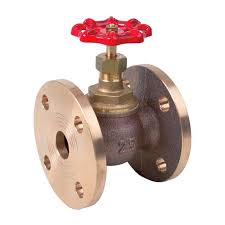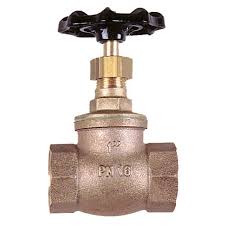Bronze Globe Valve

The Application of Bronze Globe Valve
Cameron, a renowned manufacturer of industrial valves, offers a comprehensive range of bronze globe valves that are designed to excel in a variety of applications. These valves, including the bronze angle globe valve and bronze globe valve flanged options, are engineered to provide exceptional performance and reliability in demanding environments. The superior corrosion resistance, high-temperature tolerance, and robust construction of these bronze globe valves make them the preferred choice for applications in the chemical, petrochemical, and power generation industries, where reliable fluid flow control is of utmost importance. With their proven track record and commitment to quality, Cameron’s bronze globe valve solutions deliver unparalleled performance and lasting value for their customers.
What Are The Types Of Bronze Globe Valve?
- Standard Bronze Globe Valve:
- This is the most common type of bronze globe valve.
- It features a simple design with a straight flow path through the valve.
- Used in a wide range of general industrial and commercial applications.
- Bronze Angle Globe Valve:
- The inlet and outlet ports are at a 90-degree angle to each other.
- Allows for more compact installation in tight spaces.
- Commonly used in HVAC, plumbing, and steam applications.
- Bronze Globe Valve Flanged:
- Has flanged ends instead of threaded ends for the pipeline connection.
- Provides a secure, leak-proof seal between the valve and the piping system.
- Preferred for larger diameter applications and high-pressure systems.
- Bronze Oblique Globe Valve:
- The inlet and outlet are offset at an angle less than 90 degrees.
- Helps reduce flow resistance and pressure drop through the valve.
- Suitable for applications requiring higher flow rates.
- Bronze Globe Stop Check Valve:
- Combines the functionality of a globe valve and a check valve.
- Allows flow in one direction but prevents backflow.
- Used in applications where flow reversal needs to be prevented.
What Is Bronze Globe Valve?
A bronze globe valve is a type of industrial valve primarily used for regulating and controlling the flow of fluids, gases, or steam in piping systems. These valves are characterized by their distinctive globe-shaped body and a movable disk or ball that sits within the valve, which can be raised or lowered to open or close the flow path. The use of bronze as the primary material for the valve body, trim, and other critical components provides several advantages, including superior corrosion resistance, high-temperature tolerance, and robust mechanical strength. Bronze globe valves are widely employed in a variety of applications, such as HVAC systems, water treatment plants, chemical processing facilities, and power generation plants, where precise flow control and reliable performance are essential requirements.
How to Select the Right Bronze Globe Valve?
Size and Flow Capacity: Determine the appropriate valve size based on the required flow rate, pressure drop, and pipeline dimensions. Selecting the correct valve size is crucial for achieving optimal system performance.
Pressure and Temperature Ratings: Ensure the bronze globe valve is rated for the maximum operating pressure and temperature of the system to ensure safe and reliable operation.
End Connections: Choose the appropriate end connection type, such as threaded, flanged, or socket weld, that matches the piping system’s configuration and requirements.
Cv Value: The flow coefficient (Cv) of the valve indicates its flow capacity and should be matched to the system’s flow demands.
Seating and Trim Materials: Consider the compatibility of the valve’s internal materials with the fluid media to prevent corrosion or premature wear.
By carefully evaluating these key parameters, you can select the most suitable bronze globe valve to meet the specific needs of your application and ensure efficient, long-lasting performance.
Features of Bronze Globe Valve
Corrosion Resistance:
Bronze is highly resistant to corrosion, making bronze globe valves an ideal choice for applications involving harsh, corrosive fluids or environmental conditions.
High-Temperature Capability:
The bronze material used in these valves can withstand high temperatures, typically up to 600°F (315°C), making them suitable for use in high-heat environments.
Durability and Strength:
Bronze globe valves are known for their robust construction and superior mechanical strength, which allows them to withstand high pressures and heavy-duty operating conditions.
Reliability and Long Service Life:
The inherent durability and corrosion resistance of bronze contribute to the overall reliability and extended service life of bronze globe valves.
Flow Control Precision:
The precise control and regulation of fluid flow are achieved through the precise machining and tight tolerance of the valve components.
Versatility in Applications:
Bronze globe valves are widely used in various industries, including HVAC, chemical processing, water treatment, and power generation, due to their adaptability to different operating environments.
Advantages and Disadvantages of Bronze Globe Valve
Advantages of Bronze Globe Valve:
- Corrosion Resistance: The bronze material provides excellent resistance to corrosion, making it suitable for use in harsh, chemically-aggressive environments.
- High-Temperature Tolerance: Bronze globe valves can withstand higher temperatures, typically up to 600°F (315°C), making them suitable for high-heat applications.
- Durability and Strength: Bronze globe valves are known for their robust construction and superior mechanical strength, allowing them to withstand high pressures and heavy-duty operating conditions.
- Reliability and Long Service Life: The inherent durability and corrosion resistance of bronze contribute to the overall reliability and extended service life of these valves.
- Precision Flow Control: The precise machining and tight tolerances of the valve components enable accurate control and regulation of fluid flow.
- Versatility in Applications: Bronze globe valves are widely used in various industries, including HVAC, chemical processing, water treatment, and power generation, due to their adaptability to different operating environments.
Disadvantages of Bronze Globe Valve:
- Cost: Bronze globe valves are generally more expensive compared to other valve materials, such as brass or steel.
- Weight: Bronze globe valves are heavier than some alternative valve materials, which can make installation and handling more challenging.
- Limited Pressure and Temperature Ratings: While bronze globe valves have high-temperature capabilities, they may have lower pressure ratings compared to other valve materials like stainless steel.
- Potential for Galvanic Corrosion: When used in systems with dissimilar metals, bronze globe valves may be susceptible to galvanic corrosion, which can lead to premature failure.
- Availability Constraints: The availability of bronze globe valves may be more limited compared to other valve materials, especially for specialized or custom applications.

The Specifications of Bronze Globe Valve
| Specification | Details |
|---|---|
| Type | Bronze Globe Valve |
| Ball Material | Bronze |
| Attachment Type | Threaded |
| Thread Standard | NPT |
| Thread Size | 1/2 inch |
| Body Material | Bronze |
| Safe for Use With | Water, Steam, Oil, Air, Gas |
| Handle Type | Handwheel |
| Handle Material | Bronze |
| Maximum Working Pressure (psi) | 300 psi |
| Maximum Working Pressure (bar) | 20.7 bar |
| Operating Pressure | 0-300 psi (0-20.7 bar) |
The Installation Steps for Bronze Globe Valve
- Prepare the Piping System: Ensure that the piping system is clean, free of any debris, and properly aligned to accommodate the bronze globe valve.
- Verify the Valve Specifications: Confirm that the bronze globe valve matches the required size, pressure rating, and other specifications of the piping system.
- Inspect the Valve: Visually inspect the bronze globe valve for any damage or defects before installation.
- Position the Valve: Carefully position the bronze globe valve in the desired location within the piping system, making sure the flow direction aligns with the system’s requirements.
- Connect the Valve: Depending on the valve’s attachment type, either thread the valve into the piping system or use flange connections to secure it in place.
- Tighten the Connections: Tighten the threaded or flange connections using the appropriate tools and following the manufacturer’s recommended torque specifications.
- Perform a Leak Test: After installation, conduct a thorough leak test to ensure the bronze globe valve and its connections are sealed properly and do not exhibit any leaks.
- Operate the Valve: Slowly open and close the bronze globe valve to ensure smooth and effortless operation, and to verify that the valve is functioning as intended.
- Insulate the Valve: If the application requires it, insulate the bronze globe valve to maintain the desired temperature of the fluid or gas passing through the system.
- Document the Installation: Record the installation details, including the valve’s location, specifications, and any relevant maintenance information for future reference.
The Operation Theory of Bronze Globe Valve
Operation Theory of Bronze Globe Valves:
Bronze globe valves are characterized by a circular valve disc that moves up and down within a valve body to control the flow of fluid. When the valve is open, the disc is lifted off the valve seat, allowing the fluid to flow through the valve. When the valve is closed, the disc is pressed against the valve seat, creating a tight seal and preventing fluid flow.
The movement of the valve disc is typically controlled by a handwheel or an actuator, allowing the user to precisely regulate the flow through the valve. The valve’s ability to provide accurate flow control is one of the key advantages of the globe valve design.
Crane Bronze Globe Valves:
Crane is a well-known manufacturer of high-quality industrial valves, including bronze globe valves. Crane bronze globe valves feature a robust construction with a bronze body and internal components to provide excellent corrosion resistance and durability. These valves are designed to handle a wide range of fluids, including water, steam, oil, air, and gas, making them suitable for a variety of applications.
Nibco Bronze Globe Valves:
Nibco is another prominent manufacturer of bronze globe valves. Nibco bronze globe valves are known for their reliable performance and long service life. These valves feature a bronze body and trim, ensuring compatibility with a broad range of media. Nibco’s bronze globe valves are often used in HVAC, plumbing, and other industrial systems where corrosion resistance and precise flow control are essential.
Regardless of the specific manufacturer, the basic operation theory of bronze globe valves remains the same, with the valve disc and seat assembly providing precise flow regulation and tight sealing when the valve is closed.